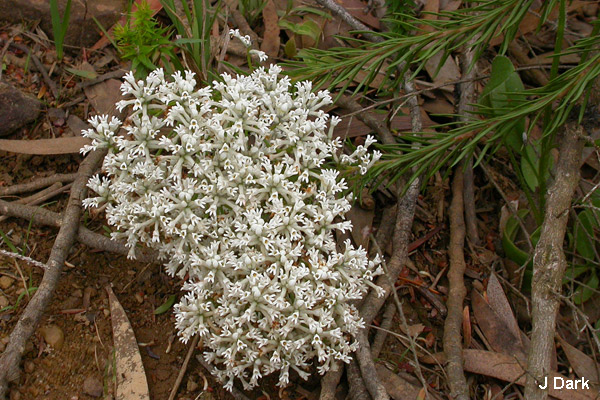General Description:
Conospermum is a genus of about 50 species, all of which occur only in Australia. Most are found in the south of Western Australia but a few can be found in the eastern states. They are generally called “smokebushes” because, with some species, the appearance of the flowering plant from a distance resembles puffs of smoke.
Conospermum taxifolium is a small, erect shrub rarely more than about 50 cm high. It is quite variable in habit and several forms exist. The leaves may be linear to elliptical in shape from 5-30 mm long by about 1-5 mm wide and are usually slightly twisted. The white flowers are individually quite small (about 75 mm long) but occur in clusters at the ends of the branches. Flowering occurs in late spring. C.ellipticum and C.ericifolium are very similar to C.taxifolium and, as the ranges of all three species overlap, correct identification can be confusing. C.taxifolium is also reported to hybridise with C.longifolium in the wild, further confusing identification.
Very few Conospermum species are in cultivation due to difficulties in propagation. Some forms of C.taxifolium are seen in gardens from time to time and are best grown in a sunny, or slightly shaded position in well drained soils. Although not a spectacular species, this is an unusual and interesting plant when in flower.
Although some success has been achieved in seed propagation, germination can be very unreliable. Cuttings of firm, current season’s growth are reported to strike reasonably well with some forms but can be difficult and slow with others.

Conospermum taxifolium
Photo: Jill Dark
 Australian Native Plants Society (Australia)
Australian Native Plants Society (Australia)